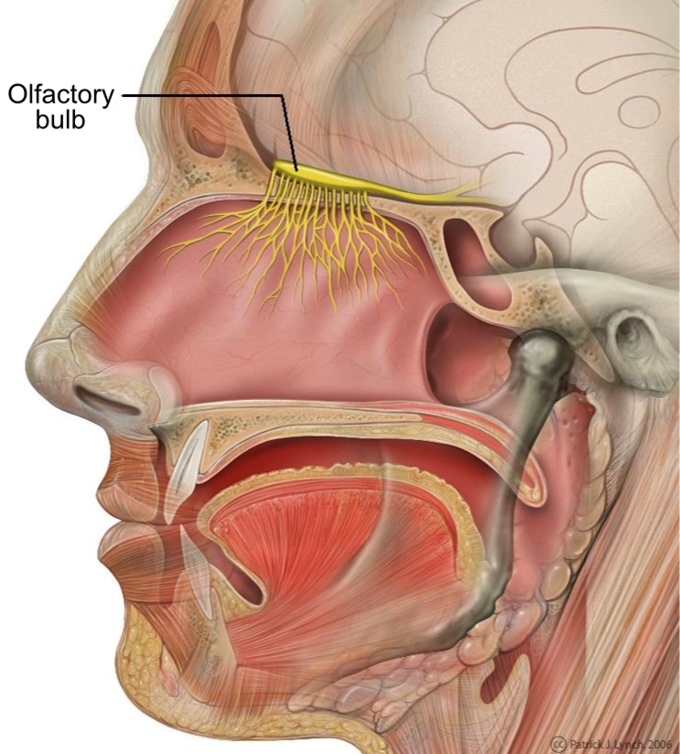The olfactory nerve, or cranial nerve I, is the first of 12 cranial nerves and is responsible for the sense of smell.
Key Terms
- olfactory receptors: Expressed in the cell membranes of olfactory receptor neurons, these are responsible for the detection of odor molecules. Activated olfactory receptors are the initial player in a signal transduction cascade that ultimately produces a nerve impulse that is transmitted to the brain. The olfactory receptors form a multigene family consisting of over 900 genes in humans and 1,500 genes in mice.
- cribriform plate: A sieve-like structure of the ethmoid bone that supports the olfactory bulb.
- olfactory tract: A narrow white band made of a bundle of axons connecting the olfactory bulb to several brain regions.
- ethmoid bone: An unpaired bone in the skull that separates the nasal cavity from the brain.
- olfactory mucosa: Located in the upper region of the nasal cavity, this is made up of the olfactory epithelium and the underlying lamina propria, connective tissue containing fibroblasts, blood vessels, Bowman’s glands, and bundles of fine axons from the olfactory neurons.

Olfactory bulb: Sagittal section of human head showing the olfactory bulb.
The olfactory nerve, or cranial nerve I, is the first of the 12 cranial nerves. It is instrumental in the sense of smell. The olfactory nerve is the shortest of the 12 cranial nerves and only one of two cranial nerves (the other being the optic nerve) that do not join with the brainstem.
The specialized olfactory receptor neurons of the olfactory nerve are located in the olfactory mucosa of the upper parts of the nasal cavity. The olfactory nerves consist of a collection of many sensory nerve fibers that extend from the olfactory epithelium to the olfactory bulb, passing through the many openings of the cribriform plate of the ethmoid bone.
Olfactory receptor neurons continue to emerge throughout life and extend new axons to the olfactory bulb. Olfactory-ensheathing glia wrap bundles of these axons and are thought to facilitate their passage into the central nervous system.
The sense of smell (olfaction) arises from the stimulation of olfactory (or odorant) receptors by small molecules of different spatial, chemical, and electrical properties that pass over the nasal epithelium in the nasal cavity during inhalation. These interactions are transduced into electrical activity in the olfactory bulb, which then transmits the electrical activity to other parts of the olfactory system and the rest of the central nervous system via the olfactory tract.


